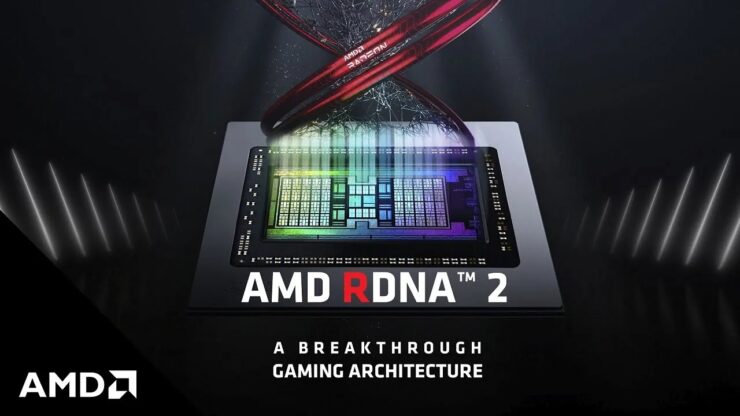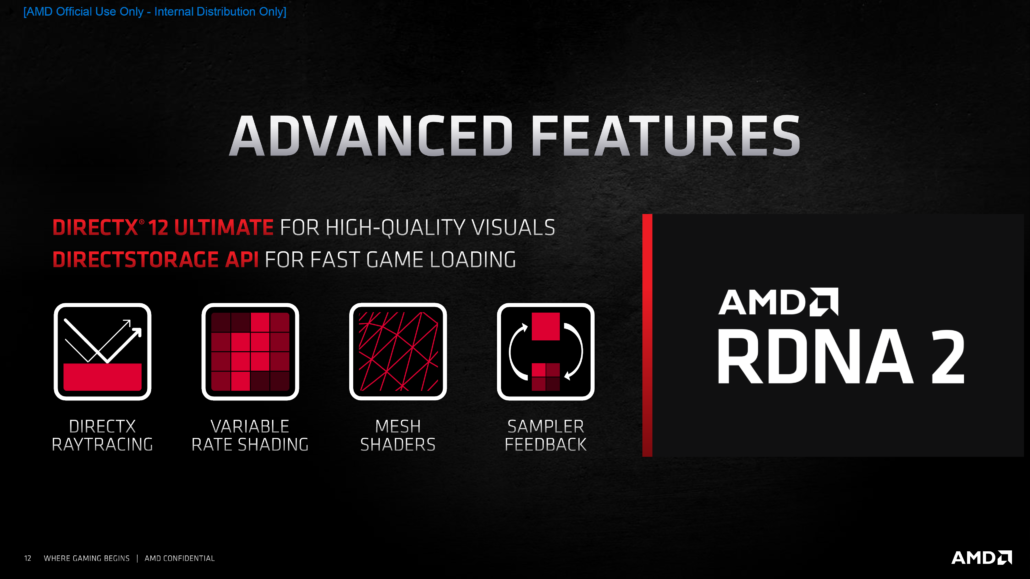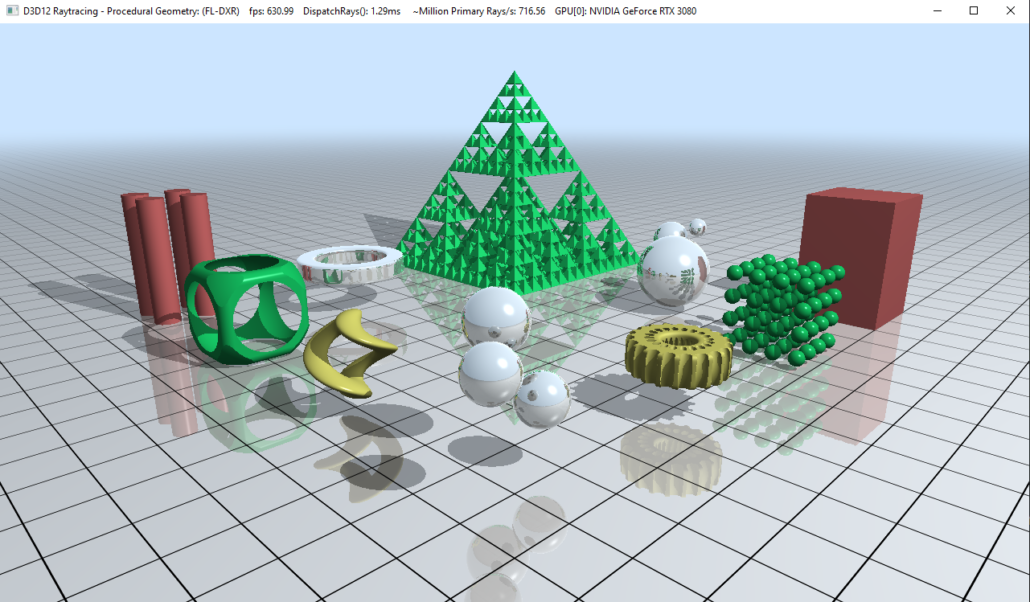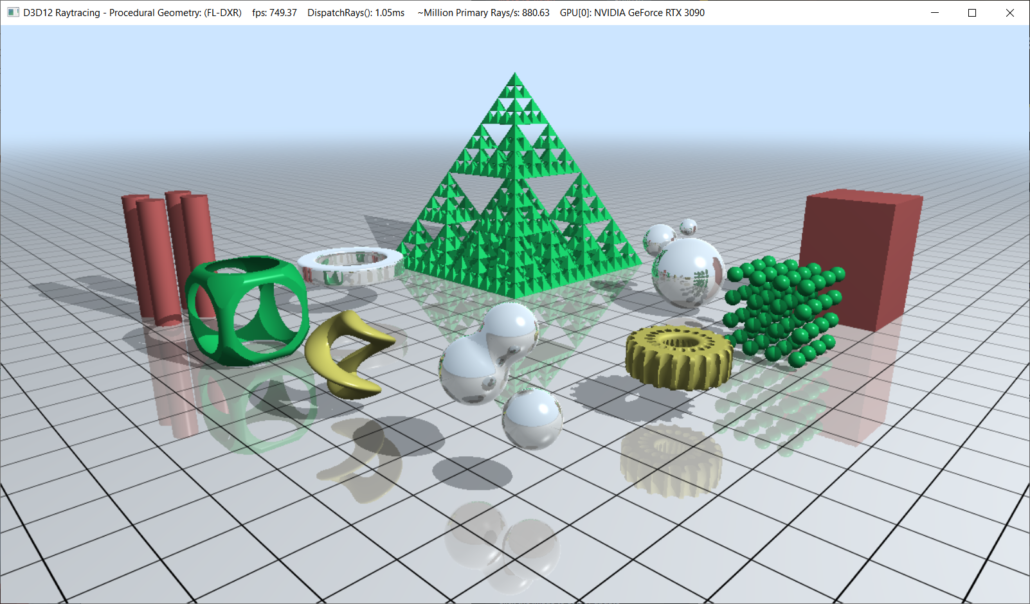
The first AMD Radeon RX 6000 series graphics cards were unveiled just a few hours ago and they look stunning given their specifications, performance numbers and especially, the prices. But the announcement was lacking a key element which we were all hoping to get more details which is the ray-tracing performance of the next-generation RDNA 2 lineup.
AMD’s Radeon RX 6000 “RDNA 2” Big Navi GPUs Ray Tracing Performance Explored – 1st Gen AMD Ray Accelerator Cores vs 2nd Gen NVIDIA RT Cores
While AMD didn’t provide any specific numbers related to ray tracing performance, a performance measurement on one of the three RDNA 2 “Big Navi” GPU based Radeon RX 6000 series graphics card has slipped by within the announcement slide deck. The numbers mention an AMD RDNA 2 graphics card which was tested within the DXR Procedural Geometry Sample application with both hardware acceleration enabled and disabled.

Measured by AMD engineering labs 8/17/2020 on an AMD RDNA 2 based graphics card, using the Procedural Geometry sample application from Microsoft’s DXR SDK, the AMD RDNA 2 based graphics card gets up to 13.8x speedup (471 FPS) using HW based raytracing vs using the Software DXR fallback layer (34 FPS) at the same clocks. Performance may vary.
New to the AMD RDNA 2 compute unit is the implementation of a high-performance ray tracing acceleration architecture known as the Ray Accelerator.
The Ray Accelerator is specialized hardware that handles the intersection of rays providing an order of magnitude increase in intersection performance compared to a software implementation.
via AMD
With hardware acceleration disabled and simply relying on the Software DXR fallback layer, the AMD Radeon RX 6000 graphics card scored 34 FPS. With hardware acceleration enabled & making full use of the newly added Ray Accelerator cores, the AMD Radeon RX 6000 series graphics card saw a 13.8x speedup. The same RDNA 2 graphics card scored 471 FPS in the application which is a huge uplift in performance.

Comparing to NVIDIA’s first generation ray-tracing implementation, the GeForce RTX 2080 scores around 308 FPS. This means that the AMD RDNA 2 based Radeon RX 6000 series graphics card scores a 50% lead over NVIDIA’s first generation RTX graphics card. The GeForce RTX 2080 Ti scores around 390 FPS which puts the AMD Radeon RX 6000 graphics card 20% ahead.
<!—->
Comparing it to the Ampere based GeForce RTX 3080 is a whole different story. Ampere introduced the second generation of RayTracing cores which offer a huge leap in performance versus the first generation RTX 20 series cards.
NVIDIA GeForce RTX 3080 DXR Ray Tracing Performance:

A user on AMD’s subreddit posted the score of his stock ASUS GeForce RTX 3080 TUF Gaming graphics card which delivered 630 FPS in the same benchmark. This shows the 2nd Generation RT cores at around 33% faster than AMD’s 1st Gen Ray Accelerator cores. My own GeForce RTX 3090 scores around 750 FPS which is around 50% faster than what AMD’s Radeon RX 6000 graphics card scored in the same benchmark.
NVIDIA GeForce RTX 3090 DXR Ray Tracing Performance:

We still don’t know which graphics card was used for this comparison as the RDNA 2 lineup includes the 60 RA RX 6800, 72 RA RX 6800 XT and the 80 RA 6900 XT graphics card. As for the benchmark itself, it is most likely that the default settings and resolution were used for this test since that was the case with my own benchmark run.
There’s a lot that needs to be discussed about AMD’s ray tracing implementation and we hope AMD provides us more details in the future prior to the embargo lift which should be sometime in the coming month.